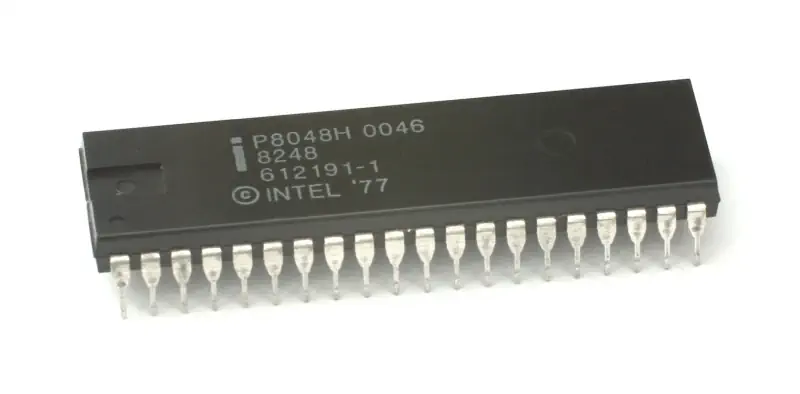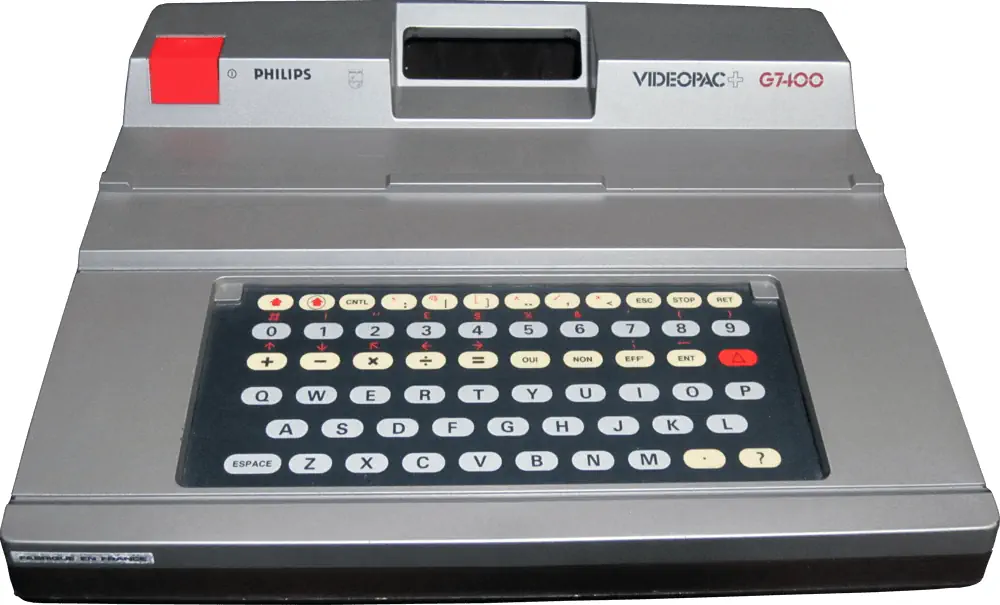
Philips VideoPac+ G7400
The Philips Videopac+ G7400 is a third-generation videogame console produced by Philips in 1983 for the European market. This machine was slated to be released in the United States as the Odyssey3 Command Center, but these plans were cancelled. Philips did showcase a prototype of the Odyssey3 during the 1983 Consumer Electronics Show, but due to the videogame crash of that year, plans to release the console were shelved.
The G7400 is the successor to the G700 VideoPac, which was the European counterpart of the Magnavox Odyssey2. The G7400 can play three types of games:
- All the normal G7000 games
- Special G7000 games with high resolution background graphics
- G7400 only games with high resolution graphics and background graphics
The system had higher resolution that its predecessors with 320x238 in 16 colors provided by a pair of chips, the EF9340 and the EF9341. These were Video Display Chips created by SGS-Thomson Microelectronics, Inc. The VideoPac 7200 also had an Intel 8245 built in to ensure compatibility with the G7000 game library in 128x64 pixels, 16 colors.
The Intel 8048 Microcontroller
The intel 8048 microcontroller, part of the MCS-48 series of microcontrollers, was released in 1976. The chip was first designed on NMOS (N-type metal-oxide semiconductor) technology, but later in the early 80s it was available in CMOS technology as well. The chip was manufactured up to the 1990s as many older designs still used the controller.
The MCS-48 series consists of the Intel 8048, the 8035 and the 8748 microcontrollers. They are based on a modified version of the Hrvard architecture. This architecture allows memory that contains instructions to be accessed as data. Most modern computers use the modified Harvard architecture. The original Harvard architecture had separate memory to store instructions and data. The modified architecture basically combines the memory into one single memory type, but data and instructions have a separate memory address space instead of a separate storage location.
The MCS-48 series had 64 to 256 bytes of internal on-chip RAM. The I/O is mapped into its own address space, separate from the instruction and data address spaces. The instructions were typically on an internal or external program ROM. The microcontroller had a very efficient one-byte instruction set and mature development tools. The chip was very cost-effective and its successor the MCS-51 series of microcontrollers have been used up into the 2000's in computer keyboards, toys and remote controllers.



